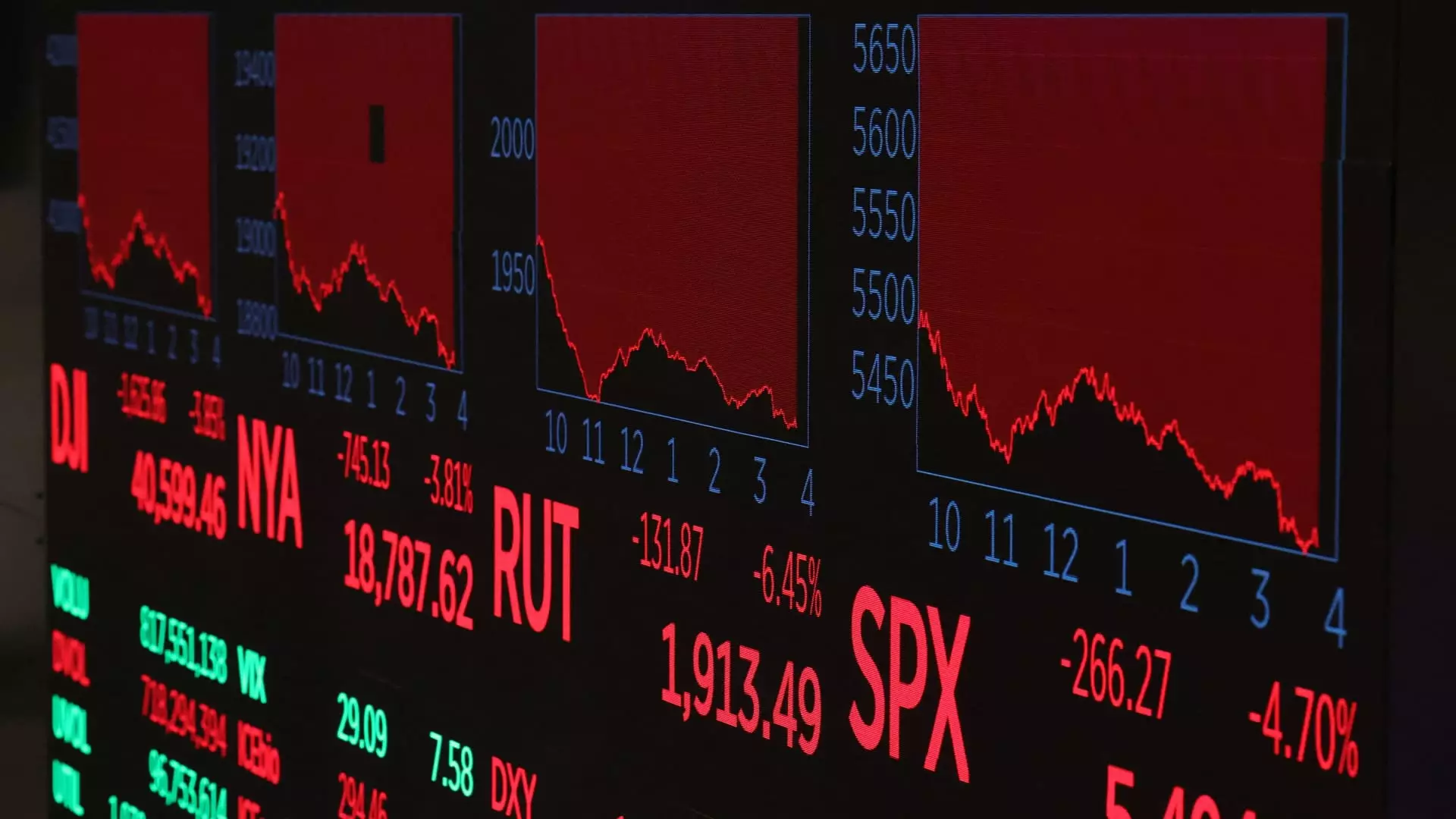In an era where economic uncertainty looms larger than ever, it seems that retail investors are shaking off the shackles of fear and opting for bold moves instead. Faced with one of the most contentious administrations in recent history, many have taken to the stock market with renewed vigor, seeing opportunity where institutional investors are largely retreating. This trend signals a shift in mindset—no longer are everyday individuals simply passive observers of the market; they are becoming active participants, making strategic investments despite the chaos.
Rachel Hazit, a 32-year-old Philadelphia marketer, embodies this new wave of investor thinking. In a dramatic juxtaposition to Wall Street’s anxieties over rising tariffs and potential recession, Hazit made the decision to invest during a downturn, viewing it as a “sale” rather than a crisis. This attitude embodies an optimistic resilience, a refreshing perspective rare in a landscape often rife with pessimism. With billions flowing into the market from first-time investors, one must wonder if this trend will reshape the traditional narrative around market downturns.
The Unyielding Nature of “Buying the Dip”
The phrase “buying the dip” has evolved into a philosophy for many retail traders, underlining their determination to seize the moment amid declining stock prices. During the recent economic tumult, data from Vanda Research revealed that retail investors pushed over $3 billion into U.S. stocks during a day when the S&P 500 saw a nearly 5% drop. Such aggressive investing challenges conventional wisdom, where downturns typically evoke panic and capitulation. Instead, retail enthusiasm seems untouched by the volatility that rattles institutional markets.
This mindset embodies a significant cultural shift: everyday investors are positioning themselves as the counterpoint to institutional traders who often reap rewards at their expense. The collective actions of these individual investors could signal a broader trend—an empowerment of the retail investor to control their financial destiny rather than be subject to the whims of the market. By leaning into a long-term investment strategy focused on diversified funds such as the Vanguard S&P 500 ETF, many retail investors are betting that their steadfastness will yield dividends in the future.
Turbulence: The New Normal
While the allure of market participation has never been more pronounced, it’s essential to acknowledge the inherent risks involved. The CBOE Volatility Index, often dubbed Wall Street’s “fear gauge,” has recently reached levels reminiscent of the early days of the pandemic. The market is characterized by dramatic swings, leaving many seasoned investors uneasy as the economic landscape shifts under foot. Yet, even in this chaos, retail investors maintain a surprising degree of confidence. The rapid inflow of cash into the market signifies that anxiety does not necessarily lead to withdrawal; rather, it can provoke a calculated response.
Despite the overall tumult, investment experts like Mark Malek from Siebert Financial note that retail traders show robust demand to buy shares even on days of significant upticks. This dichotomy exists against a backdrop of institutional caution, posing questions about the long-term implications of retail investor behavior. Are they merely riding the wave of current market sentiment, or have they genuinely adopted a paradigm that embraces an often bewildering market?
The Role of Community and Education
A key driver of this empowered retail investor movement is the burgeoning community around investment education—especially platforms directed at marginalized groups. Tori Dunlap’s emphasis on teaching women and minorities how to build wealth via investing is indicative of a larger movement that seeks to democratize financial knowledge. In times of economic uncertainty, those once excluded from financial narratives are stepping into a role of agency and authority, empowering one another through shared insights and strategies.
This shift toward education and community builds an environment where retail investors feel capable rather than vulnerable. The ability to discern sound investment opportunities becomes integral to these communities, fostering a collective confidence that resists the broader narrative of fear propagated by mainstream financial media. The historical concept of “millionaires being made during downturns” has taken on renewed relevance, giving rise to a generation unafraid to leverage market fluctuations to their advantage.
Short-Term Gains vs. Long-Term Strategies
It’s vital to recognize, however, that while the retail tide surges forward, there are pitfalls. Fear of missing out—the FOMO phenomenon—sometimes drives impulsive decisions. Hazit herself expressed mixed feelings about her investments; while she is making tactical moves, she grapples with concerns related to economic instability and its impact on consumer spending power. This brings to light an essential aspect of investing: the importance of not losing sight of economic realities in pursuit of potential gains.
The long-term strategy should ideally prevail over momentary exuberance. As many retail investors ride this current wave of market enthusiasm, a balanced approach that considers both short-term volatility and long-term sustainability will be necessary for navigating the unpredictable waters ahead. Just as Hazit calmly assesses her next steps in buying stocks one at a time, investors must remain vigilant and thoughtful in their broader strategies, avoiding the stress that volatility can bring.
The resilience and adaptability of everyday investors signify not only a shift in strategy but a cultural evolution in how we approach financial markets, suggesting that even in uncertainty, there is room for optimism and opportunity.

